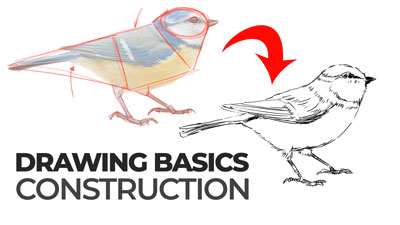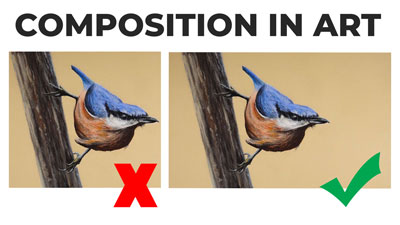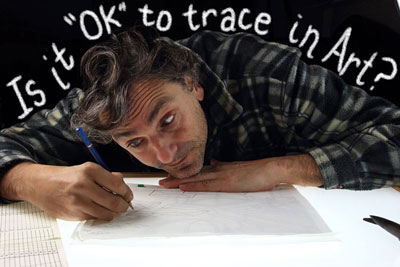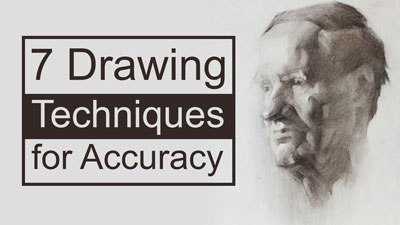
You feel exhilarated at first. Someone has found value in what you create! This is a milestone in any artist’s journey and you should soak it in and enjoy it.
But after that initial burst of joy, you may feel a small twinge of fear and uncertainty. Don’t worry, this feeling is perfectly normal.
If you’ve never sold your art before, you likely don’t know how to price it. In this moment, you may be asking yourself a few questions…
- Is my art good enough to sell?
- Do I want to sell my art?
- What’s a fair price?
- Can I create a commissioned work that will make the client happy?
- How do I price a commissioned work of art?
All of these questions are valid and should be asked. Pricing and selling your art requires a little introspection and there are several variables to consider.
Is My Art Good Enough to Sell?
Most of us first sell our work to a friend or family member. This isn’t always the case, but it’s fairly common. This makes things a little more complicated when it comes to pricing.
If it’s a friend or family member, it can make you wonder if your art is even good enough to sell. You may think they’re just trying to be nice and make you feel good about yourself.
But if they’ve expressed interest, then it’s a great opportunity for you to practice with your pricing. Treat them as if they’re a regular patron and price your art as if you were selling it to a stranger. (Keep in mind that they may be buying from you because they love you and the public may have a different opinion on your art.)
It’s normal to wonder if your art is good enough to be sold. We often doubt ourselves as artists, especially if we’ve never sold anything before. But if someone has approached you about buying your work, then your art is indeed good enough to sell.
You have to get over any insecurities and not allow those feelings to influence your pricing. The last thing you want is to sell your work and then regret the low price that you assigned to it. This happened to me with my first commissioned painting and I learned from it.
Do I Want to Sell My Art?

Creating art can be a personal experience. We pour ourselves into what we create. It can sometimes feel as though part of our souls are ingrained in what we produce. How do you place a price on this?
It can be hard to let go of your art, even for a hefty price tag. There are works that I’ll never sell. They’re too important to me personally. This is completely fine and true for most artists.
You need to ask yourself if you really want to sell your art before considering how to price it. You may need to consider your emotional attachment to your work in your pricing, if this applies to you.
It’s much easier to let go of a commissioned work than a work you created from your own inspiration. If this is something you struggle with, you may consider only working on a commission basis.
However, not all of us feel this way and many artists see their art as a product.
What’s a Fair Price for My Art?
The price you place on your art depends on several variables. These variables may lead to a broad range of prices for the same work.
Here are a few of the variables to consider…
- Are you selling through a gallery?
- Is this a commission?
- Is this an illustration that will be reproduced?
- Is the work large or small?
- What is the medium?
- Are you framing the work?
- Will it be shipped?
Selling Your Art Through a Gallery
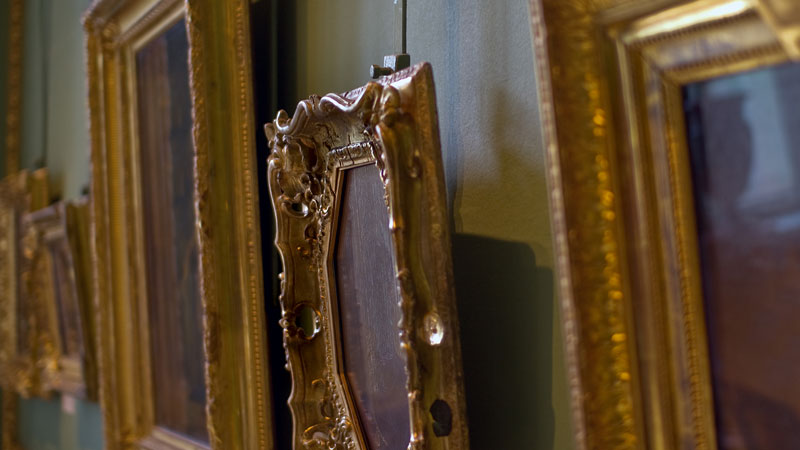
Galleries make money from your art. They are essentially a “middle man”. They take a percentage of the sell, which is sometimes as high as 50%.
Galleries do a lot of the marketing work for artists, which is why they charge a commission. They help to connect the artist’s work with a pool of patrons that are willing to pay. Most galleries tend to represent artists with a similar style. They often have newsletters, hold gallery hops, and special openings to keep patrons abreast of new works or new artists.
Many artists aren’t interested in marketing their own art. They’d rather make art and let the galleries handle the work of selling.
See also: How to Market Your Art
If you’re pricing your work and considering working with a gallery, you’ll need to consider the commission that they’ll take from the sale.
If, for example, you expect to make $600 on a work of art and the gallery demands a 50% commission, you should price the work at $1200. You’ll need to ask yourself, “Will this work sell for $1200?”. If the answer is “no”, you may need to lower your monetary expectations, change galleries, or look into other options.
Some galleries have a reputation as an influencer in the art world. In other words, artists may want to pursue these galleries since it will help them gain recognition in the art world.
Some artists are turned off by the idea of a gallery, mainly because of the commissions they have to pay. But galleries can help an artist gain respect, find buyers, and expose an artist to a specific region.
Pricing Art for a Commission
Working on a commission basis can be very lucrative for an artist. The patron or client gets a unique work of art suited to their taste and the artist usually doesn’t have any problem parting with the work.
Commissions usually only come once the artist has produced several works and has gained at least a little notoriety, but not always.
My first commission was for an acquaintance. Someone saw the work in her house, and soon I had another commission – then another. Before long, I had my first international client. At one point, I had so many inquiries, I had to turn people down.
Pricing commission work can be a little tricky. There are several things that can wrong during the process.
Communication between the artist and the patron is very important. You need to be clear with what they expect and they need to be clear with what you expect. This all needs to be worked out from the beginning.
Here are a few things that both parties should agree on…
- The subject and medium of the work.
- The size of the work.
- Estimated date when the work will be completed.
- Will the work be framed?
- How much will you be paid?
- How will the work be delivered?
- How will you be protected?
The Subject and the Medium
Obviously, you’ll need to clarify with the client what medium and subject you’ll be working with. When I was still accepting commissions, I mostly worked with graphite and created house portraits. Occasionally, I would have a pet portrait commissioned.
My clients knew exactly what to expect. My style was defined and the medium was graphite. I also worked on the same paper (charcoal paper). The only thing that changed from work to work was the size and the level of detail.

The Size of the Work
The size of the work influences the price that you can demand. Clearly, you can charge more for larger works. They require more time and materials.
For clarity, I included a simple pricing table on my portfolio site of estimated pricing based on size. The larger works were priced higher. I would adjust the price based on the level of detail required. Images that were more detailed took longer to complete, so I could charge more for them.
Estimated Date When the Work Will Be Completed
Clients need to know when to expect the completed work. You’ll need to communicate this with them up front. Be sure to give yourself plenty of time to complete the work and then surprise your client by finishing early. Do not create an unrealistic timeframe for yourself. You don’t want to feel rushed – or worse – miss your deadline.
Will the Work Be Framed?
Are you planning on framing the art? If so, you’ll need to factor in the cost of the materials and the time it will take for you to frame it. It may be best to provide a few choices of basic frames and matting options. It’s perfectly acceptable to add a little mark up and make a little profit from the framing as well.
How Much Will You Be Paid?
The price should also be very clear from the start. You should never start a work without agreeing on a price. A patron doesn’t want to be surprised by the cost as they may refuse to pay it.
I suggest providing an estimate and sticking to it. If you agree on a price before the work is completed, this price shouldn’t change after the work is done.
When I accepted a commission, I would examine the reference photos and consider the detail and size. Based on my experience, I would estimate the number of hours it would take me to complete the work. Then, I would factor in my hourly rate and multiple the number of hours by my hourly rate. This gave me an objective price that could be justified.
When I fist began, my hourly rate was a meager $35. This rate increased with each piece that I completed. With each new commission, I would add another $5-10 per hour. When I first started, here’s what the math looked like for a work that would have taken 10 hours to complete…
Sometimes, the work took longer than what I estimated. Sometimes, it was shorter. No matter how long it took, I always charged the client the original estimate. Once, I estimated that a work would take 8 hours, but it ended up taking 14. I lost a little bit of money and time, but I learned that it’s better to over-estimate than to go too low.
You’ll need to decide how much your time is worth and decide on an hourly rate that you feel is fair. Remember, creating art is fun, but it’s still work. Make sure that your hourly rate is what you deserve and don’t sell yourself short.
How Will the Art Be Delivered?
I have yet another story that you can learn from. It’s a little lengthy, but it’s important to know what can go wrong…
The holidays were always a busy time for commissions. It was during the holiday season that I created a work for a client in state far from own and had only corresponded with this client through email. I had finished her house portrait two weeks prior and sent it off to her address.
I had received confirmation that it was indeed delivered a few days after I had sent the work. (I always made sure I was fully paid before sending the work, so I wasn’t concerned and assumed everything was fine.) I usually received an email of gratitude after the work was delivered – but in this case, I didn’t. This should have been a “red flag”.
A few days later, I received an email from the client asking me where the art was and if it was finished yet.
Panic set in quickly! I had no idea what I was going to do!
I always insured the work when sending through a delivery service and always required a signature. I reviewed my receipt and noticed that the package was left by the front door – the delivery person did not get the signature!
Before contacting the client, I called the delivery service and let them have it. They assured me that it was insured and that I would be compensated for the missing package.
But what about the client? What about the art I spent so much time on? How could that be replaced?
It was time to “bite the bullet” and call the client. I was shaking when I called. I knew that she’d be so disappointed.
When I called, I offered a refund and began explaining my conversation with the delivery service. While I was in mid-sentence, she broke in with, “What are you talking about? I got your art and it’s framed above our fireplace. I sent you an email – we absolutely love it.”
Now I was really confused. Here’s what happened…
The client had ordered two artworks – one from myself and another from different artist. She had received my art, just as my receipt of delivery confirmed. But, she had emailed the other artist thanking them for the work that I created. (I bet they were confused too.) She sent me the email that should have gone to the other artist instead.
It was the other artist that missed their deadline – my art had been safely delivered.
My work had been received but most importantly – the client was happy. All of that stress was for nothing. Well, not completely. I did learn that lots can go wrong after your precious package leaves you.
Here are some things you can do to ensure the safe delivery of your art…
- Require a signature upon delivery.
- Insure your package.
- Track your package and share the tracking info with your client.
- Contact your client after they have received the work.
Protecting Yourself
Some clients commission art but don’t appreciate the amount of time and effort it takes to create it. The last thing you want is to spend hours on a piece only to have the patron refuse to pay for it. In order to keep this from happening, you’ll need to take a few preventative steps.
First, you should have everything in writing. It’s not usually necessary to draw up a formal contract, but you can if you wish. Usually a professional printed (or printable) estimate is enough.
This estimate should include the agreed subject, medium, and size. It should include your cost of materials, your hourly rate, and the estimated number of hours that it will take you to complete the work. It should also outline how the work will be delivered and when you’ll be finished with the work.
Once both parties have agreed on the estimate, you may ask for a non-refundable deposit before you begin on the work. A deposit isn’t required, but it does ensure that the client is serious and if they decide to skip out on paying you – you aren’t completely left out to dry.
Communicate with the client while the work is being developed if you wish. You may send them images of the work in progress. This way, if they want you to make any changes, you can do so while you’re still working the piece. Don’t bug them however and leave some of the work to be a surprise.
I never did this and never had any issues. I liked the idea of the art being a complete surprise. But keep in mind, my style was clearly defined and there were lots of examples I had already produced. My clients knew what to expect.
When complete, you can send a low resolution image of the work to the client. The resolution should be high enough to appreciate the work, but not so high that it could be printed or reproduced. You could also send a high resolution image with a watermark of your name or logo, but I think that detracts from the client’s first impression.
Only send the original art to the client after you’ve received full payment. If paid by check, cash the check before sending the work.
Pricing Art for Illustrations
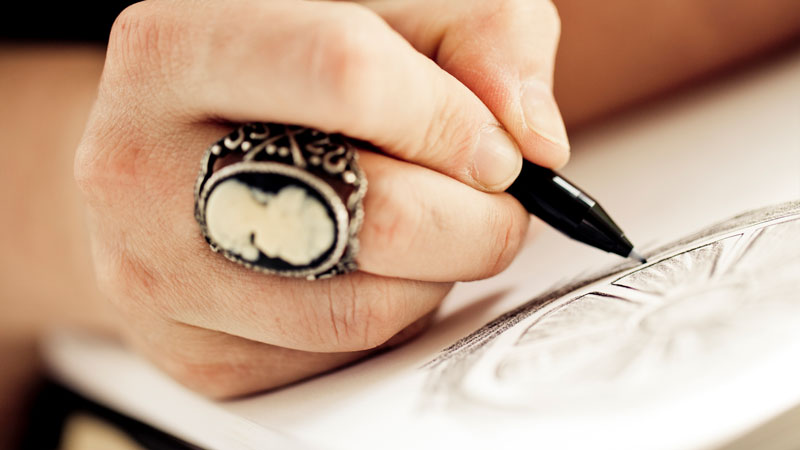
Art that is sold or purchased in order to be reproduced is considered illustration. Pricing illustration work can be handled as a commission (see above), but there’s more to consider such as the rights of the creative work. With illustration, the artist gives consent for their art to be reproduced by the client and sometimes the artist may be required to sign over exclusive rights to a publisher. If this is the case, then it should be figured in the price.
Because illustration can be complicated, a contract is almost always involved. The publisher and the artist come to an agreement over the rights of the art and the monetary compensation the artist will receive. Most illustration work is considered freelance, where an artist creates one or several works for a specific project.
The agreement made between the publisher and the artist varies greatly.
I once worked as a staff illustrator for a company that makes children’s clothing. I was completely remote and worked entirely from home. I was paid a flat fee for each month of employment. One month, I was asked to create 12 illustrations, but most of the time it was just 4 or 5. A few months, no illustrations were needed but I still got paid!
This isn’t the norm, but it’s an example of how varied agreements can be between publishers and artists.
Here’s another example…I once illustrated a children’s book. In this case, I was paid a flat fee for the entire book. However, with this project, I felt as though I was taken advantage of. The publisher asked for several revisions because they didn’t have a clear idea of what they wanted. They also increased the number of pages in the book, which meant more illustrations. I didn’t get paid for the extra illustrations because I had already agreed on a flat fee for the entire project.
I share these two examples with you to illustrate just how varied contracts can be and how you can be taken advantage of if you’re not careful.
Many illustrators work with an agency. An agency represents the artist (much like a gallery), helps them find projects, and helps to negotiate contracts. Working with an agency will usually protect you from the sharks in the publishing world.
How the Size and Medium Affects the Price of the Art

Bigger is better – right? You probably know that this isn’t true with art. (Some of the most remarkable works of art are small – the Mona Lisa is only 30″ by 21″.) But the perceived value of larger works is much higher than those of a smaller stature.
So the size of the work should play in to how much you charge for it. For larger works, you can charge more – even if you spent less time on them compared to a much smaller work. You can get away with this because the general public prefers bigger over smaller.
The medium that you use also influences the price that you can charge. Some art mediums are viewed as “more valuable”. For example, you can charge more for an oil painting than you can for a watercolor painting of the same subject with the same dimensions.
As an artist, this may seem unfair. I personally believe that watercolor is the most challenging art medium. I see oils as one of the easier painting mediums. But the perceived value of an oil painting is higher than that of a watercolor painting so you can demand higher prices.
Other Factors
We’ve already touched on some of the other factors to consider when pricing your art, but we’ll review them here.
You’ll need to consider the cost of the materials, including a frame if you provide one. Typically, higher quality materials lead to higher quality results. If you’re creating art for a client, use high quality materials and factor that into your pricing.
If you’re shipping your work, your client could pay for that too. You can include that in the price or you could offer free shipping as an incentive.
Conclusion
Pricing your art can be tricky. You want to quote a price that reflects all the hard work that you put into your art, yet you want to name a price that will also result in a sale. As you can see there are many variables to consider.
So how much do you charge? Well, that question can only be answered by you.
The bottom line is that you should charge what you think is fair and try to approach pricing your art as objectively as possible. Some artists charge too much and seldom make a sale, while others charge too little and are overworked and underpaid. The key lies in finding the happy medium between the two – where you are paid fairly and your patrons are happy too.
If so, join over 36,000 others that receive our newsletter with new drawing and painting lessons. Plus, check out three of our course videos and ebooks for free.


